The Beginning of The Ende
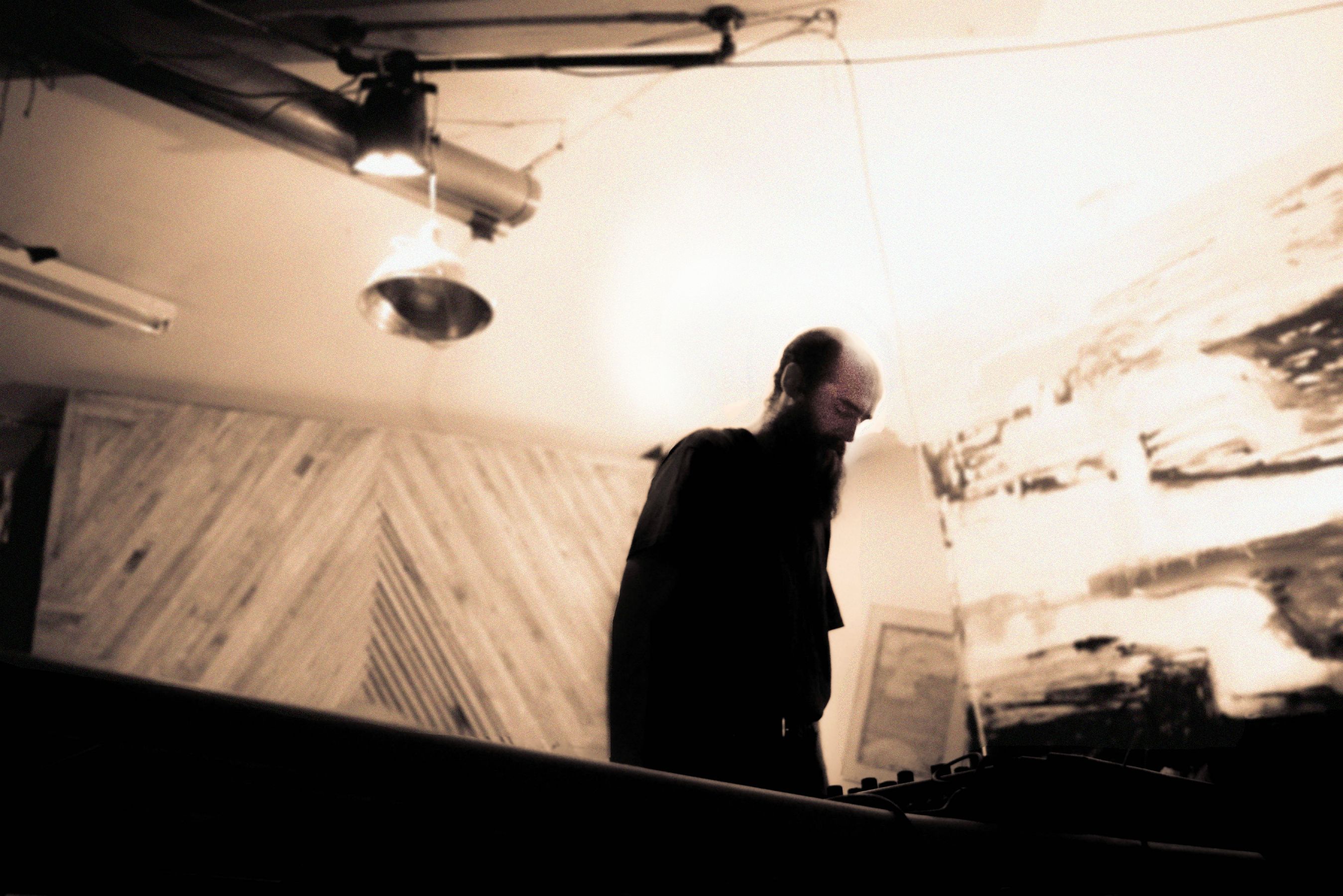
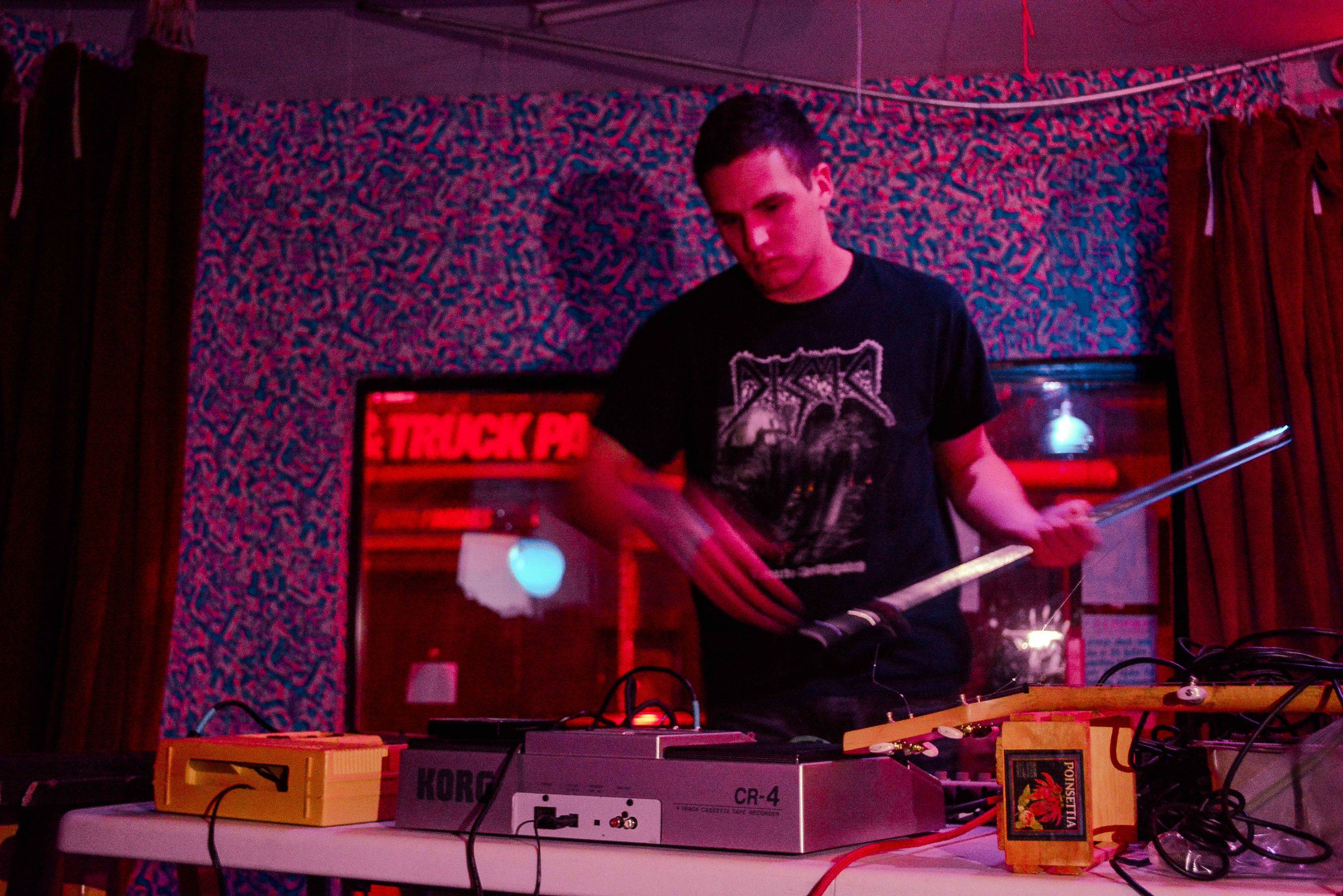
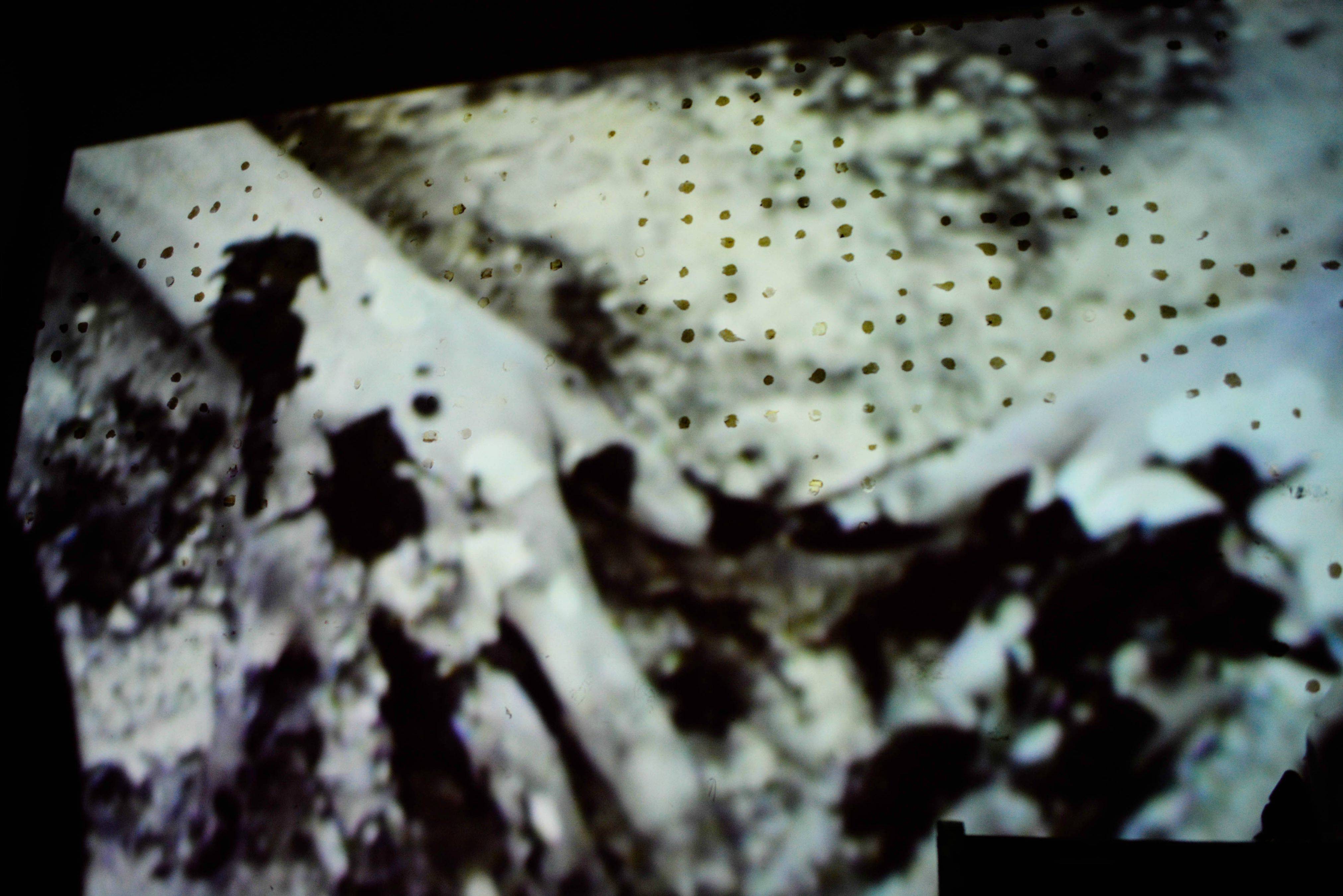
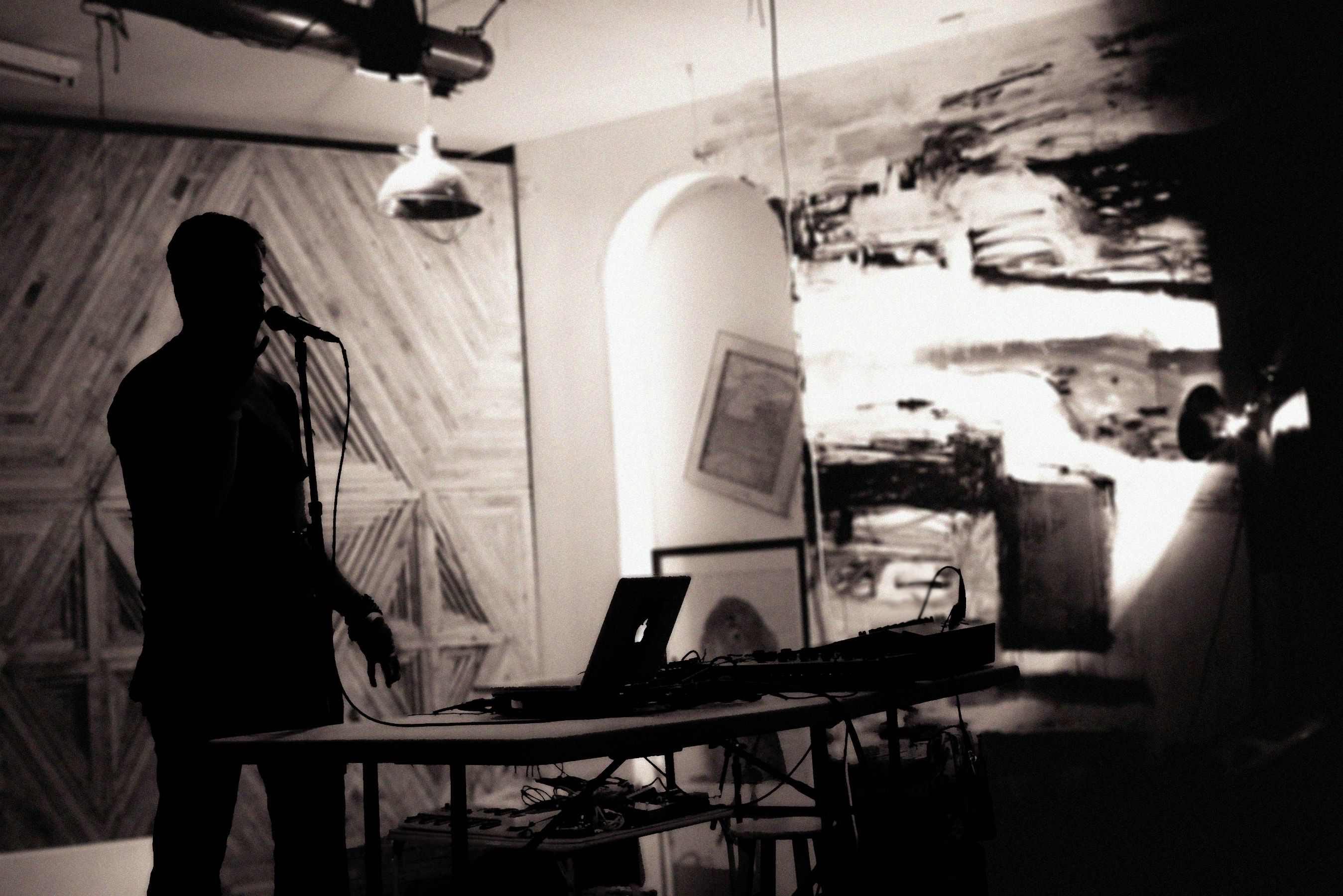
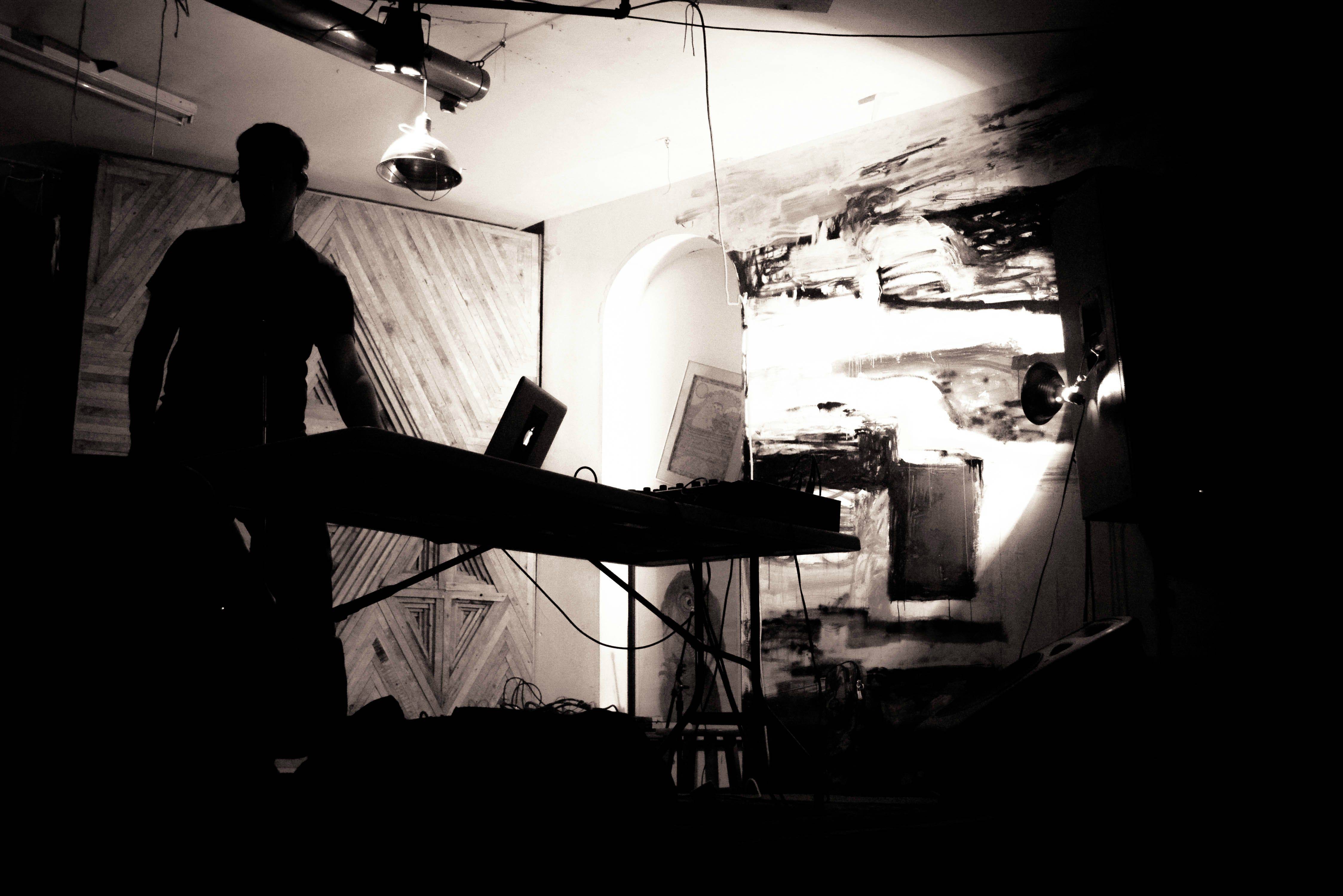
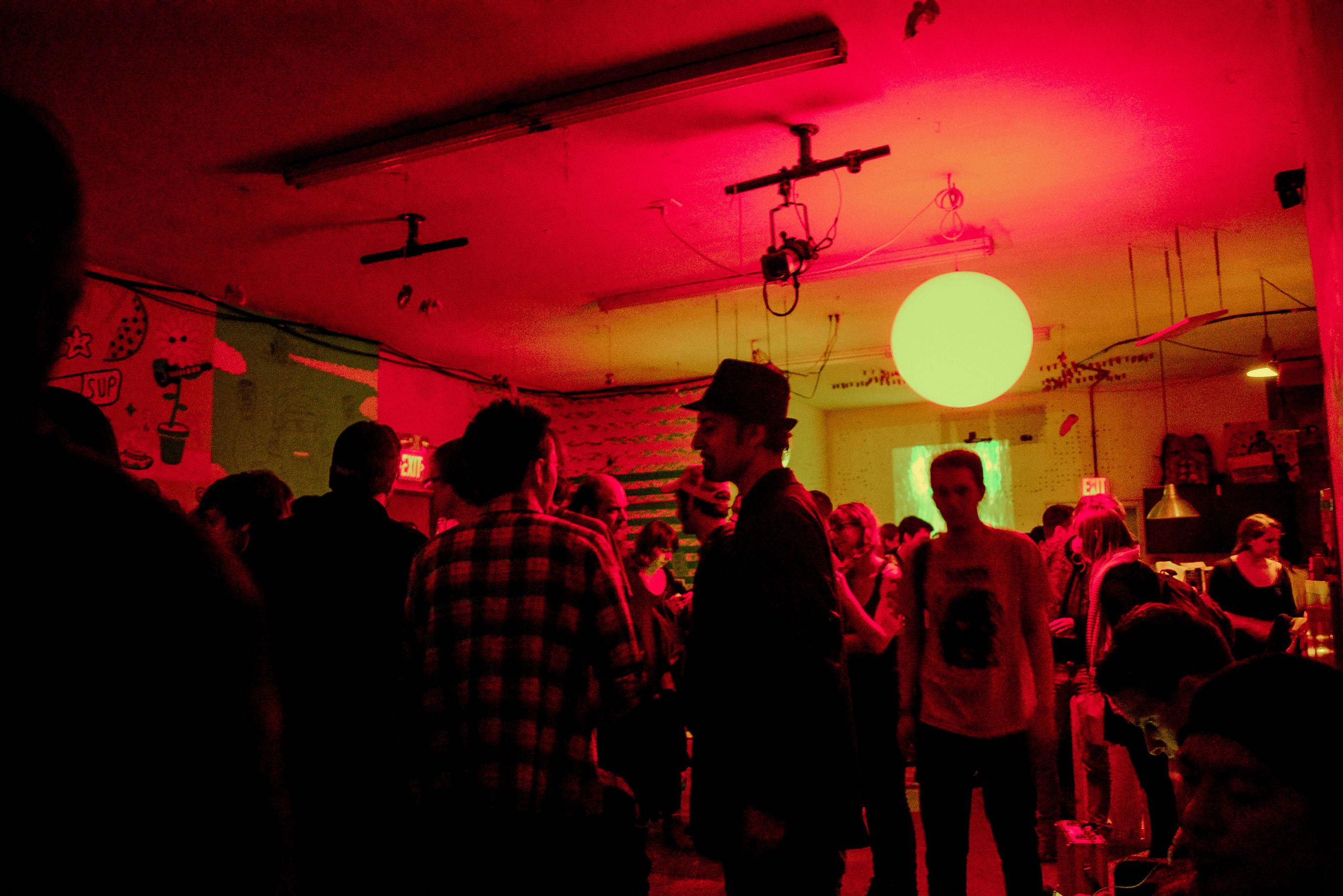
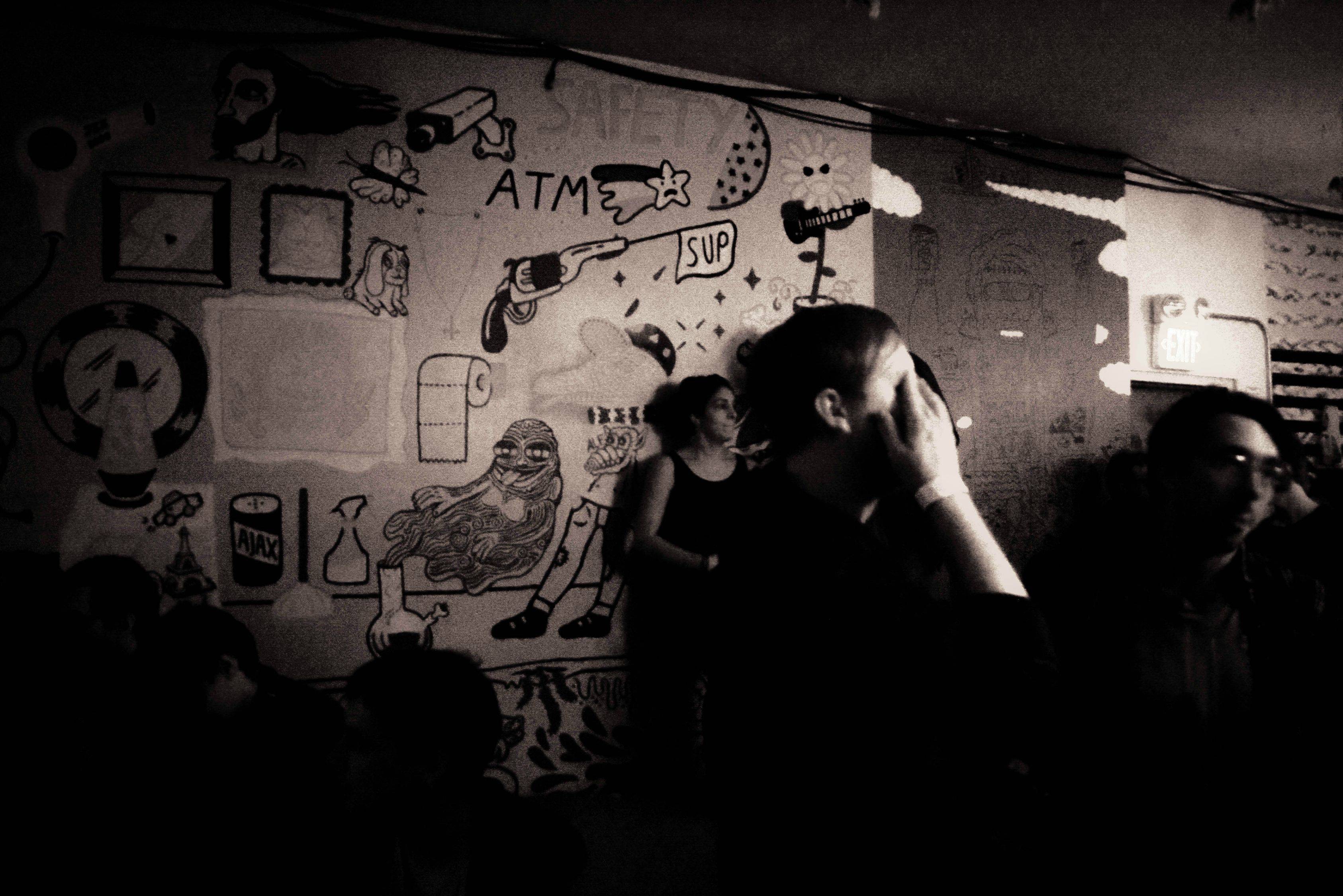
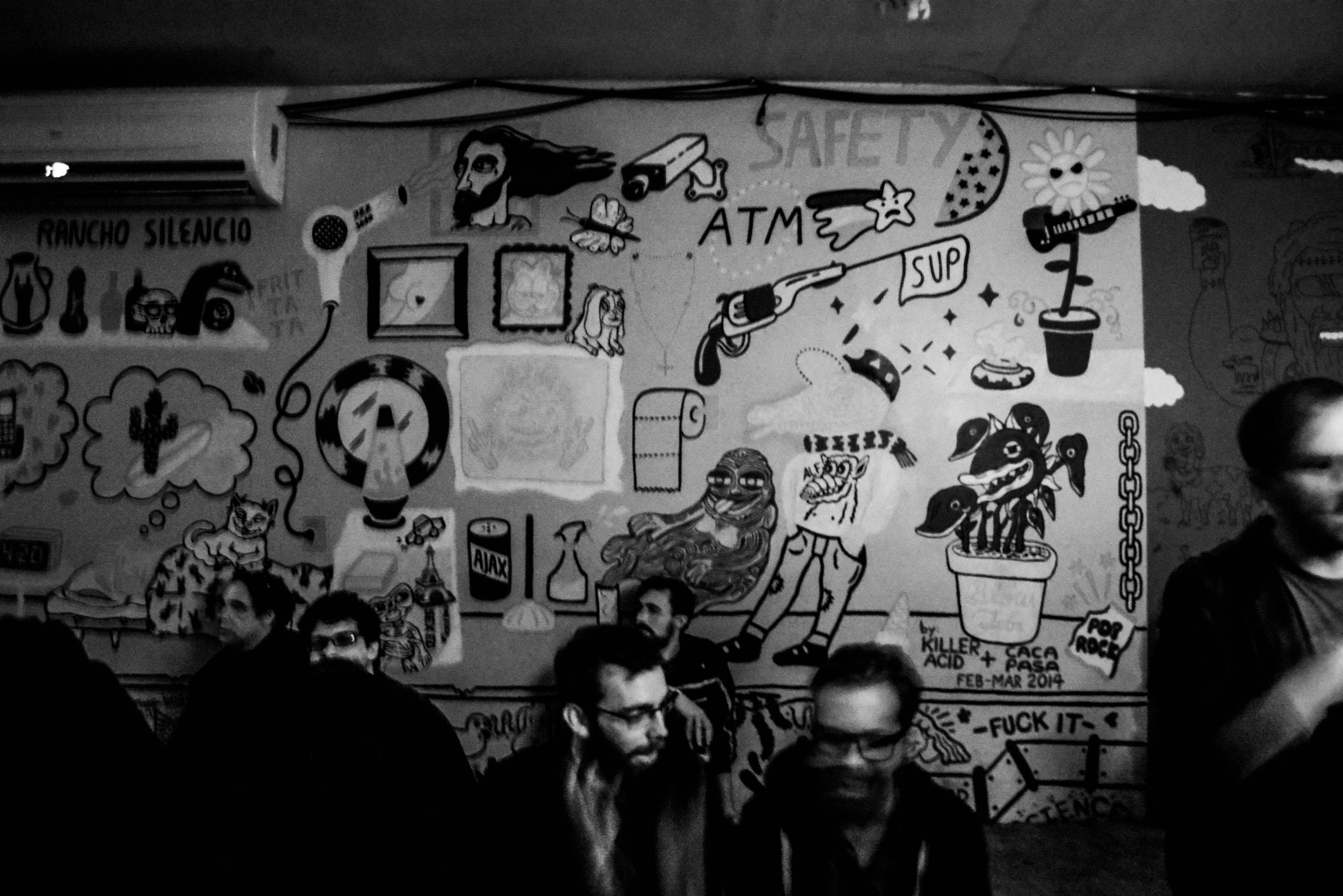
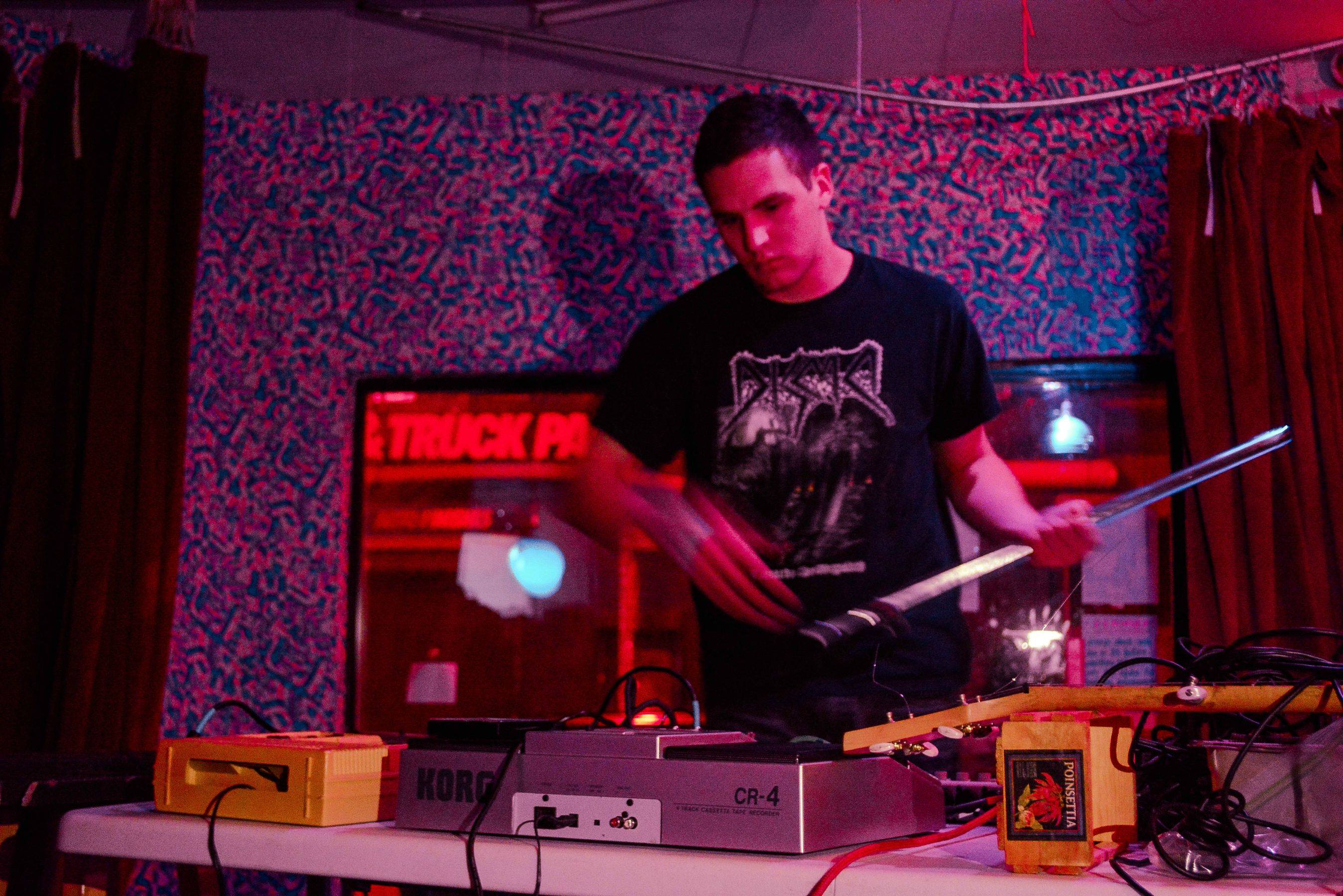
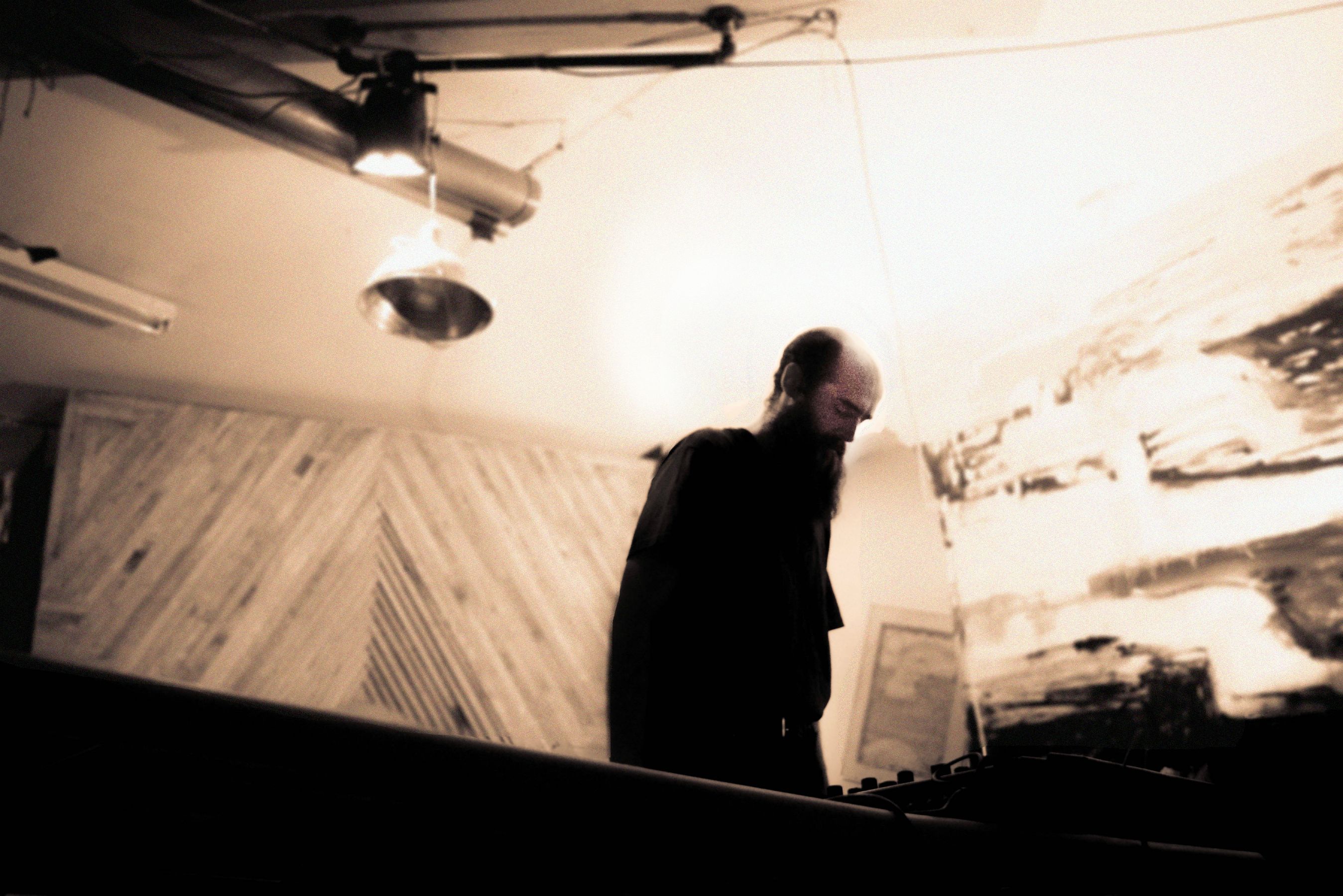
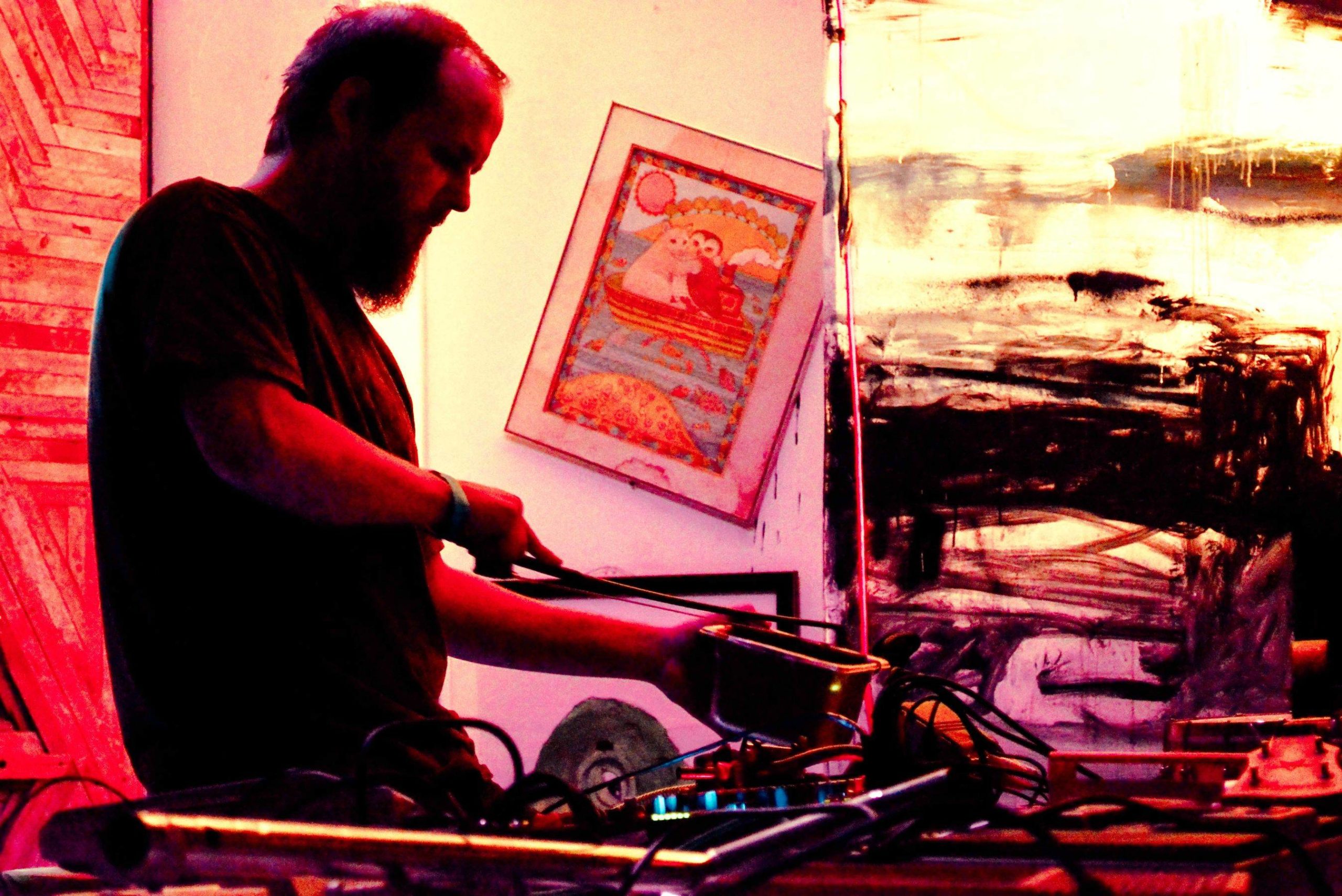
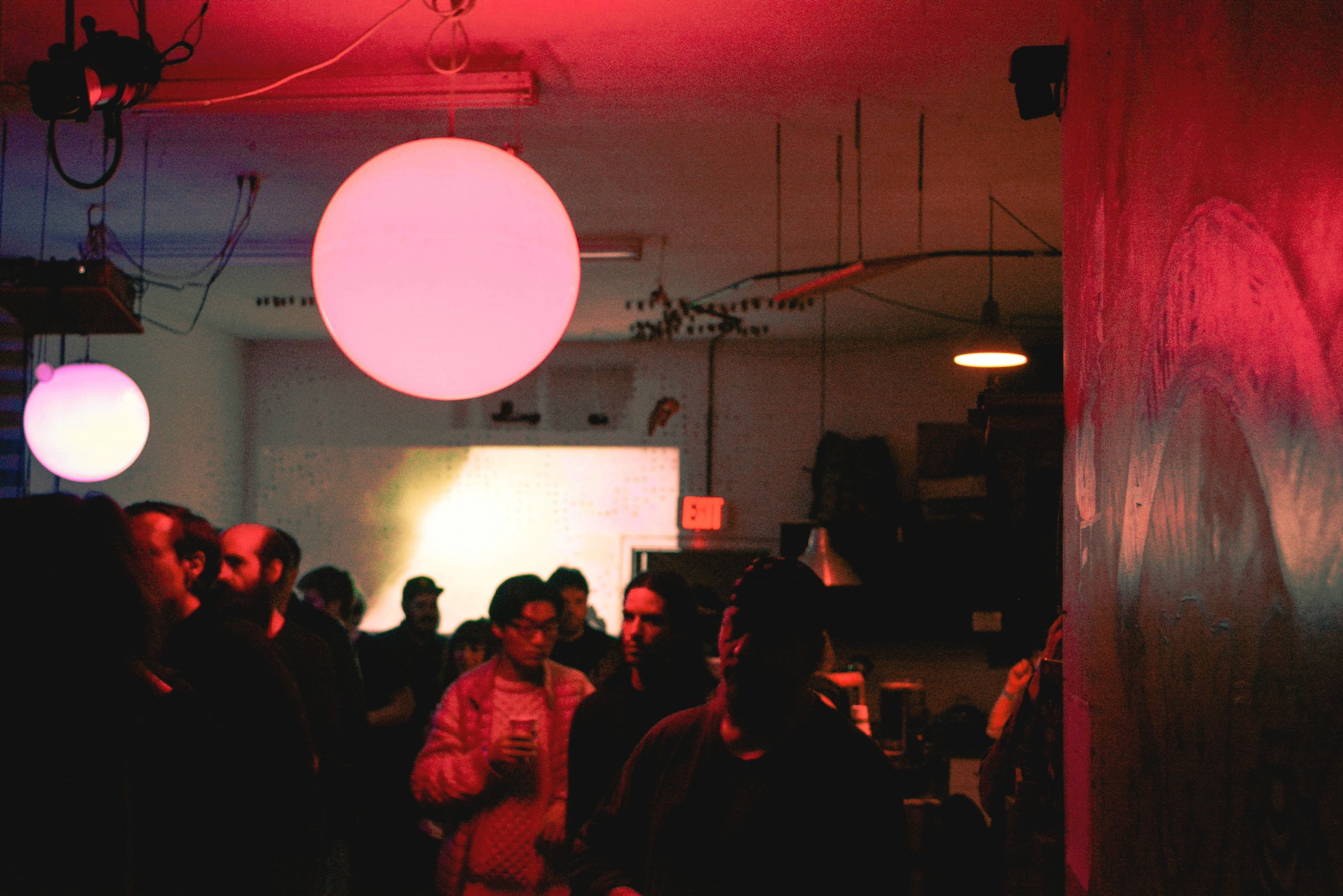
Sound Credits:
1. Developer
2. Newton
3. Work-Death
I went to the first night of the fourth installment of the modestly legendary Ende Tymes Festival, a weekend-long celebration of experimental music, video, and art. It was situated at The Silent Barn in Brooklyn, NY and on Sunday at Outpost Artists Resources in Ridgewood. It’s an entirely independently funded festival of extremely noncommercial music mostly harsh noise started by musician and organizer Bob Bellerue. I went on Thursday night, May 8th, to see what the noise (so to speak) was all about.
The concert is notorious for being what Bob has described as the one noise concert of the year for a lot of artists and musicians in the Brooklyn area. Its substantial line up served as a powerful draw of likeminded artists around the New York area. Performers had a focus on textures, performance, innovation, and the extreme ends of the sound spectrum. A wide sprawl of different ethos drives the artists on display, but experimentation is their shared connection.
As an event organizer, Bob Bellerue is a modest, well-spoken man, kind and easygoing. Organizing the event himself, he skews away from commercial sponsors, handpicking the acts based on who he personally enjoys. Low budget and ramshackle, Ende Tymes operates entirely on handshakes, informal agreements and whatever free promotion the internet can offer. It’s an unspoken majesty of the experimental arts world that I will proudly defend: no one is in it for the money. This is true expression, take it or leave it.
A short walk from the Myrtle/Broadway J train stop brought me to The Silent Barn. Performances had begun on time, which was a little unexpected. Bob is strict and regimented in his scheduling; like some others I know in the same position, he’s dealt with enough noise code violations to understand the importance of the strict itinerary. And everyone helps each other. A percent of the door goes to the performers, who are vast and from several places in the world. An average performance length of about 15 minutes promises speed in delivering weird or transformative experiences.
Unaccustomed to bands who keep their schedules so strict, I miss Chris Pitsiokos’ performance with Philip White as well as Limax Maximus. Their performances, already uploaded online to UnARTigNYC (unartignyc.com) by the time I wrote this story, are excellently diverse and colorful.
I entered to the sounds of Lazurite, one electronic musician whose manipulation of live samples created an unusually immediate reaction. She was weaponizing sculptures installed in the Barn’s main stage, building a squeaking groan into a disarming, unexpectedly ebullient swell of buzzing drones and a kind of distant, glimmering twinkle of something that at full volume would be quite terrifying, but in the distance, has an odd allure to it. It strikes me as a “gem†sound, for its crystalline, elusive beauty, and how it holds the air in stasis.
In the midst of the audience were most of the performers. They are all friends to some degree, and usually associate on Facebook in different music groups, where the proliferation of event sharing ensures a loyal attendance. I met up with Rat Bastard briefly, who I had previously seen in Gainesville when he was promoting the International Noise Conference, his noise festival.
I’ve done INC [at The Silent Barn] before. There’s too many f***ing rules now, he says when I tell him I’m excited for the next performance. Now you can’t take a beer, can’t take a s*** with a beer, he laments.
As a member of the Laundry Room Squelchers, Rat is privy to the kind of psuedo-celebrity status of other noise artists with long and influential careers. His show is last, and he’s a major crowd draw.
Following Lazurite was one of the most spectacular performances of the night, Phill Niblock. A lasting force in avant garde music, minimalism, and experimental composition, Niblock has had influences on artists such as David First, Sonic Youth and Glenn Branca. Armed with nothing but a computer and a beer, he drew layers upon layers of simple waves into a heart stopping superdrone.
It could only be called such, a superdrone; past the dirges and chants, coursing through the legacies of the Scottish bagpipe and the esoteric artifice of the snake charmer, the raga and the sitar building more furiously, growing metallic and mean and brighter than organic instruments but still perfectly seated in the middle of your ears, it was a breathtaking performance, unmatched. At 19 minutes, it felt far longer and yet I didn’t mind it one bit. I sat down and got some thinking done. At one point I may have tried to meditate. Niblock sat patiently at his computer sipping his beer, then folding his hands together.
Worth followed, an artist who utilized a string of effects pedals and a device called a no-input mixer, which is an audio mixer that creates sound out of pure feedback. Existential implications aside it burst forth in piercing tones in harsh timbres and occasionally thumped a deep heartbeat or a cat’s purr or a motorcycle in idle. At the end of the performance it was wailing and screaming, as it is wo’nt to do.
I took a break and went out for some fresh air in the side entrance and stone garden that wraps along the side of the Silent Barn. Lazurite and their friends were relaxing, and I knew one or two people there to kill time with. The experimental community is a fairly close knit one but everyone is welcoming and friendly. I had a drink outside and surveyed the sculptures and art. As I stood up to return, I heard the sound of a broken pipe. It may have been gushing water into a metal bin.
Past the flimsy threshold between the outside world and what is now a Taskmaster performance, I heard the sound of two trains colliding. It just kept going and going. Vicious and metal and loud, the A and C trains crashing together in parallel from 125th to about 14th. No wait, now it sounds like children clashing pans. No, it’s two hundred gamelan players with no rhythm playing their hearts out. Then everything gets blurry and sounds like a nightmare. It’s about half over at this point. Taskmaster grabs a wire which (I guess) makes noise happen, and locks his arms spread out, Diane Arbus hand grenade style. He has an impressive beard and a monastic disposition.
Next on the stage was one Jean Sabastien Truchy, who I am unfamiliar with. His music consists of stark, binary drone up note, down note, beat, rest, etc. and a disturbing stage presence. In a truly unnerving cadence, Truchy contorts his hands and moans like a tortured prisoner. The industrial pulses behind him grow stranger and collapse under electronic processing. He’s also rocking the monastic chic look, but of a monk who’s rooting for the other team. Then he just starts screaming like a regular demon. I’m thoroughly terrified and impressed. Once in a while a burst of noise subsumes another and it’s almost briefly kind of catchy. It’s very pretty at the end, with layers of voices and wind gusts.
Truchy gives way to Shredded Nerve. He has on black boots and shorts and a t-shirt for the band Disma. Sometimes when people use loop pedals or looping equipment of some kind they like to use interesting sound sources and in Shredded Nerve’s case he banged on metal grates and used a metal billy club with a microphone attached to it. It was sort of catchy, or it was infectiously looped until satiation set in and I could hum along to it. I’m pretty sure at some point the sound of someone urinating was sampled, which has a long list of precedents.
I was eager to try out the camera, which I had borrowed. The stage proved difficult to photograph due to low lighting, so I wandered around the venue. The Silent Barn was cluttered with trinkets, walls were covered in graffiti, and the side entrance contained not only a ticket booth but also a barbershop, where customers are encouraged to pay what they think their haircut is worth.
I took a few shots of the interior and some of the art. Walking around I saw art peppered along the walls and rooms full of people talking to one another. Each of the musicians who had played earlier seemed to have a cabal of people who knew them. There were about three degrees of separation between everyone in the room. I took a picture of Bob as he opened a back door, perhaps to retrieve some more cables. Everyone needed lots of cables at shows like this.
Developer was the most actively diverse sound painter of the night, serving a buffet of interesting and far-reaching timbres interspersed with small, neat experiments like a microphone on a door hinge, and it squeaks! When I closed my eyes it was impossible to track. It reminded me of being stressed in the morning, when my fatigued mind can’t form a complete thought. Then he bowed what looked like a drying bin for utensils, and at some points along the bow it sounded like an electric guitar. Other noises turned up in pitch and squeaked humanly, and then some genuine bells, musical bells, played before more noise happened.
Slasher Risk were a duo who lit sage to cleanse the venue before playing some post-rocky guitar melodies for a few minutes. It was very moody and kind of nostalgic and sweet. Then someone turned a knob and the melodies became a guitar tornado. Slasher Risk’s attention to detail in the evocation of irreverent 90s alt-rockers was too spot on for the crowd to appreciate. They riffed and posed and twisted their hips lackadaisically while snarls of blown-out bombast whirled about the room. It was very dark and I couldn’t take any good pictures of them and at one point a half dozen attendees tried to start a mosh pit.
Again I was reminded of simple binaries. Silence and noise. Total harmony, then the beatific, cathartic buzz of the atonal. Suspended in the air of the room were two glowing orbs cycling through colors. They glowed along with the music, getting brighter or darker as the volume rose or lowered in the room. But tonight everything was so loud you’d never know. They were fully beaming, in soothing pastels and loud neons.
What began as work/death’s performance turned into an opportunity for me to clear my head a bit. I took off around the street corner for some food and to check my ears to know what kind of damage I’d accrued. I felt guilty for skipping out on the show and subconsciously ill from the absence of sounds. It was as if a great vacuum opened up in my head, far more punishing than anything emanating from the little venue behind me.
Normally at this hour I would have been hearing an arresting, echoing herd of piano chords doused in processing by work/death’s mindful and brilliant Scott Reber; I had to rectify that problem. I managed to make it back after around 10 minutes right as something kind of transcendentally beautiful collapsed into something darkly creepy. It kind of toed that line for a while before fading out.
Blessed Thistle was Bob Bellerue himself, a standard (for this crowd) performance that was nevertheless thoroughly satisfying. He screamed, whipped white hot sonics up and down, pressed buttons that made things growl or hiss or buzz, and at one point shook his gear around violently, knocking some of it to the ground. Bob was the Platonic Noise Artist, his highs perfectly highs, lows just right, and just enough interaction and scalding fury to come alive, particularly when he yelled and shook the flimsy plastic table he laid his toys on. Already worn out from the event, the perils of DIY organizing, it seemed like Bob held in every last ounce of his precious strength for this part of the night.
Newton provided the penultimate performance of the evening, a schizophrenic sound collage made up of textures and thumps and watery sloshing sounds. Clicks and percussive slaps were timbrally blended into a grey mush that cavorted between speakers playfully…then angrily. When that thing reached its logical end point, Newton played a sample of a crying baby and dissected it, rearranged it, sped it up and down and fed it through weird machinations until it screamed and howled like strange birds in pain. In physics class I learned that a baby’s cry was in the range of frequencies that human ears are most sensitive to.
Rat Bastard was the last act. Quick to set up, he was armed with nothing but a guitar and an amp, and what looked like a pedal that had been built from scratch, no doubt to produce odd noises. With the bravado of the world’s one true guitar god and the outfit of a mad burglar, Rat truly shredded. A method not taught in any books, vile and burning with a mix of hate and desire he shredded like a real life punk. The crowd, which had diminished to a small semi-circle, loved it. Some bobbed their heads.
It was always the most curious thing to me, bobbing heads at a noise concert. How were you all bobbing along? There was no rhythm to follow, no pattern to make sense of. Nothing to grab onto; nothing but pure id, manifest in sound. Yet still, inexplicably, I nodded along with them. The music breached patterns of thought and structure and there we were small but communal, nodding along together. Somehow it still made sense.
Bob was tired. There were still messes of audio cables, circuit bent synthesizers and busted amps to store and plenty to clean up. I offered to help load out gear after the last performance had finished and I was packed up. He told me not to worry. Someone would help. Someone will always help out.
The festival continued all weekend long but I don’t think I could have survived the entire weekend. It ended on Sunday, May 11th, with a screening of experimental video art, a welcome respite from the chaos of past days. Walking back home Thursday night I felt my brain make its own little drone concert: a single piercing ring which grew as the city noise ebbed, until it occupied my thoughts completely and lasted for two more days.
Ende Tymes typically takes place in May once per year, at a venue chosen by Bob Bellerue. Anyone interested in the Ende Tymes festival or any of the performers and artists involved can learn more at halfnormal.com/endetymes/. Anyone curious about The Silent Barn should check out silentbarn.org. Both are artist run, self-supported communities, open to volunteers and participants.


2 COMMENTS
Steven Paide
08/16/2021I’ve been following this writer for awhile. His writing is really in-depth, thanks.
Pingback
05/11/2015Chastity Bullion